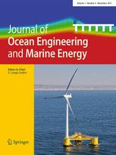
Journal of Ocean Engineering and Marine Energy
Scope & Guideline
Navigating the Future of Renewable Ocean Solutions
Introduction
Aims and Scopes
- Marine Renewable Energy Systems:
Research focused on the design, optimization, and performance assessment of marine energy systems, including wave energy converters, tidal turbines, and offshore wind farms. - Hydrodynamics and Fluid Mechanics:
Studies investigating fluid-structure interactions, hydrodynamic forces on marine structures, and modeling of wave and current dynamics in various marine environments. - Environmental Impact and Sustainability:
Exploration of the ecological implications of marine engineering projects and energy systems, emphasizing sustainable practices and technologies that minimize environmental impacts. - Innovative Engineering Solutions:
Development and application of cutting-edge engineering solutions, including advanced materials, computational modeling techniques, and control strategies for marine vehicles and structures. - Coastal and Ocean Engineering:
Research addressing challenges related to coastal infrastructure, including erosion, wave dynamics, and the design of resilient marine structures. - Data Analytics and Monitoring:
Utilization of machine learning, IoT, and data analytics for real-time monitoring, predictive maintenance, and operational optimization of marine energy systems.
Trending and Emerging
- Machine Learning and AI Applications:
There is a growing trend towards integrating machine learning and artificial intelligence in marine engineering, particularly for predictive maintenance and optimization of energy systems. - Hybrid Energy Systems:
Research on hybrid systems that combine wind, wave, and tidal energy sources is on the rise, showcasing innovative approaches to enhance energy efficiency and reliability. - Resilience and Adaptation Strategies:
Studies focusing on the resilience of marine structures to extreme weather events and climate change impacts are increasingly relevant, reflecting global concerns about environmental sustainability. - Smart Sensors and IoT in Marine Monitoring:
The implementation of smart sensors and IoT technologies for real-time monitoring of marine environments is gaining traction, facilitating improved data collection and operational efficiency. - Advanced Computational Modeling Techniques:
There is a notable increase in the use of advanced computational methods, such as CFD and multi-scale modeling, to address complex problems in ocean engineering and energy conversion.
Declining or Waning
- Traditional Marine Energy Technologies:
There is a noticeable decrease in studies focused solely on conventional marine energy technologies, as the field moves towards more innovative and hybrid solutions that integrate multiple energy sources. - Basic Hydrodynamic Studies:
Research that only addresses fundamental hydrodynamic principles without application to specific engineering challenges or technologies is becoming less frequent, as the emphasis shifts towards practical applications and advanced modeling. - Static Structural Analysis:
While structural integrity remains important, the focus on static analysis of marine structures is waning in favor of more dynamic assessments that consider real-time operational conditions and environmental interactions. - Generalized Environmental Assessments:
Studies that broadly assess environmental impacts without specific applications or detailed methodologies are less common, as researchers are now focusing on detailed, project-specific environmental assessments. - Single-Disciplinary Approaches:
Research that does not integrate interdisciplinary perspectives, such as combining engineering with environmental science or socio-economic factors, is becoming less prevalent as collaborative approaches gain importance.
Similar Journals

Journal of Operational Oceanography
Exploring the Intersection of Technology and Ocean StudiesThe Journal of Operational Oceanography, published by Taylor & Francis Ltd, stands as a pivotal platform within the field of oceanography, focusing on the integration of operational practices, technology, and scientific research. With a strong impact factor and a notable Q2 quartile ranking in the category of Earth and Planetary Sciences, this journal offers researchers, professionals, and students a vital resource for disseminating new knowledge and innovative methodologies related to ocean studies. Covering a range of topics from marine data analysis to the application of oceanographic principles in sustainable practices, the journal’s content is crucial for advancing understanding in this dynamic field. Operating since 2008 and continuing through 2024, it is dedicated to fostering collaboration and dialogue among the scientific community, ensuring accessibility to essential findings that drive informed decision-making in marine science. With its commitment to high-quality, peer-reviewed articles and a ranking in the top 10th percentile of its category, the Journal of Operational Oceanography is an indispensable resource for those looking to make significant contributions to marine research.
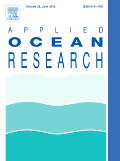
APPLIED OCEAN RESEARCH
Unlocking the Potential of Our Oceans Through ResearchApplied Ocean Research, published by Elsevier Scientific Ltd, stands as a premier journal in the field of ocean engineering, with an impressive impact factor derived from its esteemed reputation and contributions to the discipline. Having been established in 1979, the journal has continually provided a platform for groundbreaking research, fostering innovation and advancement in applied ocean science through a diverse array of topics, including marine technology, coastal engineering, and ocean energy. Currently holding a prestigious Q1 ranking in the Scopus category of Ocean Engineering, with a rank of 10 out of 105 and a notable 90th percentile, Applied Ocean Research is a vital resource for researchers, professionals, and students dedicated to understanding and solving complex challenges linked to ocean environments. Although it provides subscription-based access, the depth and quality of research featured make it a key reference point for those in academia and industry alike. Located in the heart of London, this journal embodies a commitment to excellence in the study of ocean phenomena, positioning itself as a critical conduit for knowledge dissemination and professional growth in this dynamic field.
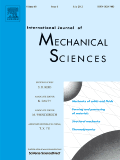
INTERNATIONAL JOURNAL OF MECHANICAL SCIENCES
Advancing the Frontiers of Mechanical InnovationThe INTERNATIONAL JOURNAL OF MECHANICAL SCIENCES, published by PERGAMON-ELSEVIER SCIENCE LTD, stands as a premier platform for groundbreaking research in the field of engineering and applied sciences. With an impressive convergence of scholarly work from 1960 to 2024, the journal maintains its position in the elite Q1 quartile across several categories, including Aerospace Engineering, Mechanics of Materials, and Ocean Engineering, among others. Its esteemed rank within the Scopus database further underscores its vital role in advancing knowledge in Mechanical Engineering and related disciplines, holding ranks in the top percentiles. While it operates on a subscription basis, the journal prioritizes delivering high-quality, peer-reviewed articles that not only inform but also inspire innovation within academia and industry alike. The INTERNATIONAL JOURNAL OF MECHANICAL SCIENCES is an essential resource for researchers, professionals, and students aiming to deepen their understanding and contribute to the dynamic landscape of mechanical sciences.

International Journal of Maritime Engineering
Exploring Cutting-edge Research in Maritime OperationsThe International Journal of Maritime Engineering (ISSN: 1479-8751, E-ISSN: 1740-0716), published by UNIV BUCKINGHAM PRESS in the United Kingdom, is a vital resource for the maritime engineering community, addressing pressing issues in both Environmental Engineering and Ocean Engineering. Established in 2006, this journal serves as a platform for disseminating innovative research, technological advancements, and practical solutions that enhance the sustainability and efficiency of maritime operations. With its current classification in the Q3 quartile for both fields in 2023, it offers valuable insights to researchers, professionals, and students who seek to bridge theoretical knowledge with industry applications. Though the journal does not operate under an open access model, it remains an essential reference for academic discourse and advancement in maritime studies through its rigorous peer-review process and high-level research outputs.
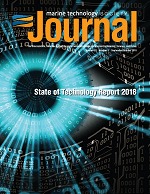
MARINE TECHNOLOGY SOCIETY JOURNAL
Pioneering Insights for the Marine CommunityMARINE TECHNOLOGY SOCIETY JOURNAL, published by the Marine Technology Society, Inc., serves as a critical forum for advancing the field of marine engineering and oceanography. With a rich history dating back to its inception in 1969 and continuing through various converged years until 2024, this journal is recognized for its contributions to the understanding of marine technologies and their applications. It currently holds a notable Q3 ranking in both Ocean Engineering and Oceanography, as per the 2023 metrics, underscoring its significance in these domains. Although access is not open, the journal rigorously assesses and publishes high-quality research articles, technical notes, and reviews that engage a wide readership of researchers, industry professionals, and students alike. With the journal's aim to disseminate innovative findings and foster dialogue within the marine community, it promises to be an essential resource for anyone looking to explore the dynamic field of marine technology.

INTERNATIONAL JOURNAL OF OFFSHORE AND POLAR ENGINEERING
Exploring the Frontiers of Offshore and Polar EngineeringINTERNATIONAL JOURNAL OF OFFSHORE AND POLAR ENGINEERING, published by the International Society of Offshore and Polar Engineers, is a prominent academic journal dedicated to advancing research in key engineering disciplines such as Civil, Mechanical, and Ocean Engineering. Established in 1991, the journal caters to a global audience, providing an essential platform for disseminating innovative findings and case studies pertinent to offshore and polar environments. With a focus on practical and theoretical applications, the journal ranks in the Q3 category across its relevant fields as of 2023, reflecting its significant contribution to civil and structural engineering, mechanical engineering, and ocean engineering. Although it does not offer open access, its rigorous peer-review process ensures that only high-quality research is published, making it a critical resource for researchers, industry professionals, and students invested in the dynamics of offshore and polar engineering. The journal's commitment to exploring emerging challenges and technological advancements underlines its importance in shaping the future of engineering practices in some of the world's most extreme environments.

International Journal of Energy and Environmental Engineering
Uniting Expertise for a Sustainable Energy LandscapeInternational Journal of Energy and Environmental Engineering, published by SPRINGER HEIDELBERG, is a leading platform for innovative research in the fields of energy and environmental engineering. With an ISSN of 2008-9163 and an E-ISSN of 2251-6832, this journal is dedicated to advancing knowledge and technology that intersects both energy and environmental disciplines. Recognized in the Q2 category for 2023 in both Energy (miscellaneous) and Environmental Engineering, this interdisciplinary journal aims to address global challenges in energy sustainability and environmental protection. The journal also boasts strong Scopus rankings, standing at Rank #73 in Environmental Science and Rank #28 in General Energy, highlighting its influential role within the academic community. Researchers, professionals, and students are encouraged to contribute and engage with cutting-edge studies that push the boundaries of knowledge and innovation in energy and environmental engineering.

International Journal of Power and Energy Systems
Navigating the Frontiers of Power SystemsInternational Journal of Power and Energy Systems, published by ACTA PRESS, serves as a vital platform for research and discourse in the multifaceted fields of applied mathematics, electrical and electronic engineering, and energy engineering. With an ISSN of 1078-3466 and an E-ISSN of 1710-2243, this journal covers a broad spectrum of topics pertinent to power and energy systems, showcasing innovative research from its inception in 1996 through to its projected contributions in 2024. Operating from Calgary, Canada, the journal, though not currently open access, provides invaluable insights into the challenges and advancements within these domains, as reflected in its categorization in the Q4 quartile across multiple indices. Despite being positioned in lower output percentiles in 2023 rankings on Scopus—specifically, #212 in Energy Engineering and Power Technology—it remains a critical resource for scholars seeking to expand the frontiers of knowledge in energy sustainability and system efficiency. Researchers, professionals, and students alike will find the journal’s commitment to fostering academic dialogue and disseminating pioneering results both essential and inspiring.
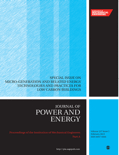
PROCEEDINGS OF THE INSTITUTION OF MECHANICAL ENGINEERS PART A-JOURNAL OF POWER AND ENERGY
Transforming Ideas into Energy SolutionsPROCEEDINGS OF THE INSTITUTION OF MECHANICAL ENGINEERS PART A-JOURNAL OF POWER AND ENERGY, published by SAGE PUBLICATIONS LTD, is a pivotal journal dedicated to advancing the fields of mechanical engineering and energy technology. With a history spanning from 1983 to 2024, this journal provides a respected platform for researchers and practitioners to disseminate findings that address contemporary challenges in power generation, energy efficiency, and sustainable engineering practices. As evidenced by its quarter ranking in Q3 within the categories of Energy Engineering and Power Technology, and Mechanical Engineering, it serves as a significant resource for academics aiming to enhance their understanding and explore innovation in these critical areas. While currently not an open-access journal, the research published here is invaluable for both ongoing education and professional practice, making it an essential read for anyone engaged in the engineering disciplines.
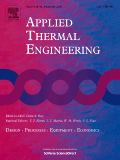
APPLIED THERMAL ENGINEERING
Exploring the forefront of thermal engineering breakthroughs.Applied Thermal Engineering is a leading international journal dedicated to the field of thermal engineering, published by Pergamon-Elsevier Science Ltd. With an impressive impact factor indicating its significance in the academic community, this journal focuses on innovative research and developments related to energy engineering, fluid flow, and transfer processes, as well as manufacturing and mechanical engineering. Being indexed in top quartiles (Q1) across multiple categories, it ranks exceptionally well on platforms like Scopus, ensuring that contributors reach a wide and relevant audience. The journal supports both open access and subscription options, promoting the dissemination of vital research findings from 1996 to 2024. With its commitment to advancing the discipline and implementing rigorous peer-review processes, Applied Thermal Engineering serves as an essential resource for researchers, industry professionals, and students aiming to stay abreast of the latest advancements and applied methodologies in thermal science.